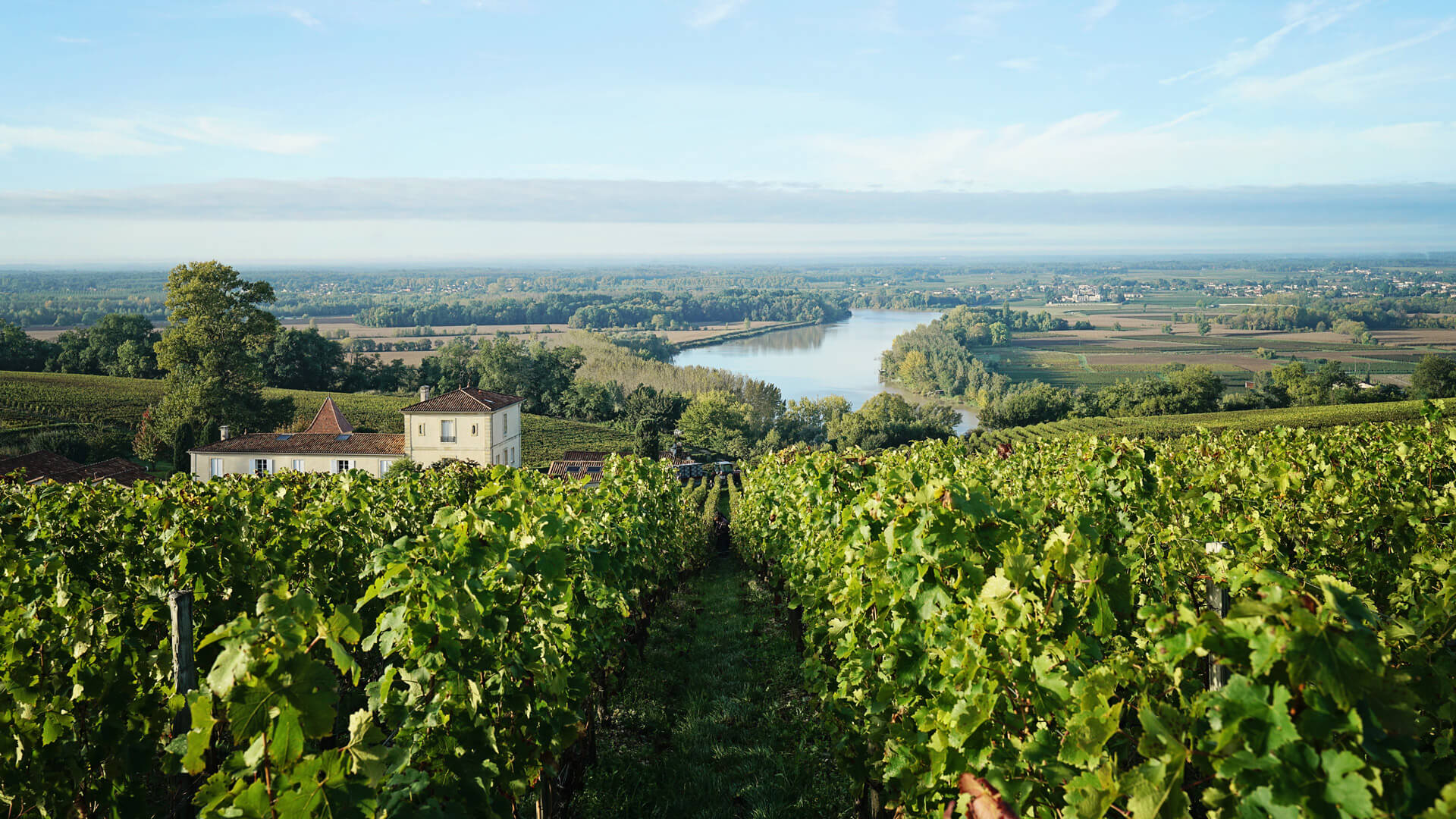Saint-Émilion
The picturesque Saint-Émilion sits in the heart of the Libournais region of Bordeaux and produces some of the world's most famous Merlot-based wines.
For those looking for the best of Bordeaux's "right bank," Saint-Émilion delivers the goods. The Saint-Émilion Grand Cru appellation here (which takes up the same area as Saint-Émilion) has a classification system ranking the region's top wineries.
Of course, you'll find both easy-drinking, and silky Merlots, as well as powerful, structured, needs-time-in-your-cellar styles.
Château La Grace Dieu des Prieurs overlooking the city of Saint-Émilion.
Saint-Émilion Wines
The appellation requires that all Saint-Émilion or Saint-Émilion Grand Cru wines are red. The soils here work best with Merlot and Cabernet Franc, so these two grapes play an important role in Saint-Émilion's red wines.
Wine Styles of Saint-Émilion
The lighter red blend style offers silky tannins and a mixture of red berries, plums, and spice notes. You'll often find these wines labeled as simply Saint-Émilion, which has slightly lower quality requirements than the other appellation here.
The richer red blend style is more deeply colored and tastes full bodied, with high tannins. Expect perfumed floral, meaty, savory, and herbal aromas. This style is often labeled Saint-Émilion Grand Cru because the grapes and vineyards meet or exceed the more rigorous quality expectations of the appellation.
If you're looking for the highest quality wines from this region look out for the word "Classé" on the label - that means it's part of the Grand Cru Classé system and the quality will be excellent. There's also the term "Grand Vin de Bordeaux" which means the bottle is the winery's top wine.
Saint-Émilion Wineries To Know
The most famous wineries have been part of the Grand Cru Classé system of Saint-Émilion. This classification requires wines pass a rigorous tasting panel which is reclassified every ten years.
Currently, there are four wineries that make up the top tier called Premiers Grands Crus Classé – which means they're the "finest of the finest" of Saint-Émilion. (It also means they're quite expensive!)
Château Angélus - promoted to the "A" tier in 2012, but with a history going back to 1782. Producing Merlot/Cabernet Franc blends with approximately 60/40 blending ratio, depending on the vintage.
Château Ausone - with only 17.3 acres (7 hectares) of vines, this is the smallest property of all classified Bordeaux wines. Ausone refers to the Roman poet, Ausonius, who described Bordeaux in the 3rd century. This winery is leaving the classification system in 2022 which has created quite a stir in Bordeaux.
Château Cheval Blanc - Another winery that's choosing to leave the classification system in 2022 - this estate has done extensive quality research on Cabernet Franc and sits very close to the border of Pomerol.
Château Pavie - Also promoted to the "A" tier in 2012, Pavie has some of the steepest slopes in Saint-Émilion.
Saint-Émilion Terroir
This part of the Right Bank has some serious soil diversity for those nerdy geologists out there. And that means there's a lot of different effects the soil can have on the final wine. Let's break down what's going on in Saint-Émilion's dirt.
Terroir and Age-Worthy Wines
Extremely high quality, age-worthy wines that need time in a cellar generally come from two different areas of vineyards:
-
Hillsides and Plateau – Hillsides or Côtes sit below the town of Saint-Émilion and the Plateau sits on the east and west sides. These areas have clay and limestone soils which give structure, tannin, and rustic qualities to the wines.
-
Gravel – There's a crop of gravel soils where Saint-Émilion intersects with Pomerol. The gravels create more elegant, aromatic wines (and are a great place to hunt for Cabernet Franc).
Easy-Drinking Wines
There are also easier drinking wines with silky tannins that don't need much time, or perhaps any time, to improve in your cellar - these tend to come from: The Plain - This is a flat plain found between the Dordogne River and the town. There are sandy, alluvial soils, producing lighter wines.
Saint Emilion vs. Saint Emilion Grand Cru
What's the difference between Saint-Émilion and Saint-Émilion Grand Cru? Well, they have the same geographical footprint, but with different winemaking rules - for example Saint-Émilion has a maximum yield of 53 hectoliters per hectare and Grand Cru has a reduced maximum of 40 hL/ha.
As far as the Saint-Émilion Grand Cru classification goes, it has two tiers and is separate to the appellation. It gets updated and changed every 10 years (2022 and beyond).
- Saint-Émilion Grand Cru Classé 64 wineries can label their wines with "Saint-Émilion Grand Cru Classé"
- Saint-Émilion Premier Grand Cru Classé This is the "creme de la creme" of Saint-Émilion Grand Cru with two tiers within this category: "A" and "B." 4 wineries have the exclusive "Premier Grand Cru Classé A" and 14 wineries can label as "Premier Grand Cru Classé B."
Saint-Émilion Facts and Classification Information
- Two appellations in the same area: Saint-Émilion and Saint-Émilion Grand Cru
- 13,123 acres (5311 ha) in size.
- Grape varieties planted: 79% Merlot, 15% Cabernet Franc, 6% Cabernet Sauvignon Saint-Émilion officially established as an AOC in 1936
- Saint-Émilion Grand Cru AOC established in 1954
- Saint-Émilion is a registered UNESCO World Heritage site
- Average estate size is 20 acres (8 ha), that's less than half the average on the Left Bank!
- The region has 678 winemakers.























